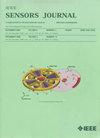脑卒中后患者脑电图微状态异常:一项初步研究
IF 4.3
2区 综合性期刊
Q1 ENGINEERING, ELECTRICAL & ELECTRONIC
引用次数: 0
摘要
探索脑功能对于揭示中风的病理机制至关重要。虽然大多数研究都集中在大脑功能上,强调大脑区域内部或区域之间的动态连接和相互作用,但它们往往忽略了大规模网络拓扑结构的全局特性。在这项研究中,我们分析了脑卒中患者的静息状态脑电图(EEG)微状态,计算了不同微状态类别的关键参数,如平均持续时间(MD)、发生率(OC)、时间覆盖(TC)和转移概率(TP)。因此,我们在健康受试者和中风患者中确定了四种微状态类别(a - d)。值得注意的是,脑卒中患者在B- d级有显著的变化,B级和C级的MD、OC和TC增加,d级的MD、OC和TC下降。此外,脑卒中患者在B级和C级之间的TP高于健康对照组。此外,我们观察到D类OC与临床Fugl-Meyer评分之间存在正相关,这表明微观状态动态和运动恢复之间存在联系。这项研究强调了特定微观状态和大脑区域之间的联系,提供了中风患者表现出视觉和突出网络(SNs)活动增加,但背侧注意网络(DAN)活动减少的证据。我们推测这些结果来自枕叶、额叶、顶叶和背前扣带皮层的变化。这些发现加深了我们对脑卒中病理生理学的理解,并为进一步的研究提供了支持。本文章由计算机程序翻译,如有差异,请以英文原文为准。
Abnormal EEG Microstates in Poststroke Patients: A Pilot Study
Exploring brain function is crucial for unraveling the pathological mechanism underlying stroke. While most studies focus on brain function and emphasize dynamic connections and interactions within or between brain regions, they often ignore the global properties of large-scale network topology. In this study, we analyzed resting-state electroencephalography (EEG) microstates in stroke patients, calculating key parameters such as mean duration (MD), occurrence (OC), time coverage (TC), and transition probability (TP) across different microstate classes. As a result, we identified four microstate classes (A-D) in both healthy subjects and stroke patients. Notably, stroke patients showed significant changes in Classes B-D, with increased MD, OC, and TC in Classes B and C and decreased MD, OC, and TC in Class D. In addition, stroke patients displayed higher TP between Classes B and C than healthy controls. Moreover, we observed a positive correlation between the OC of Class D and clinical Fugl-Meyer scores, suggesting a link between microstate dynamic and motor recovery. This study highlights the connection between specific microstates and brain regions, providing evidence that stroke patients demonstrate increased activity in visual and salience networks (SNs), but decreased activity in the dorsal attention network (DAN). We speculate these results from changes in the occipital lobe, frontal lobe, parietal lobe, and dorsal anterior cingulate cortex. These findings deepen our understanding of stroke pathophysiology and support further research.
求助全文
通过发布文献求助,成功后即可免费获取论文全文。
去求助
来源期刊

IEEE Sensors Journal
工程技术-工程:电子与电气
CiteScore
7.70
自引率
14.00%
发文量
2058
审稿时长
5.2 months
期刊介绍:
The fields of interest of the IEEE Sensors Journal are the theory, design , fabrication, manufacturing and applications of devices for sensing and transducing physical, chemical and biological phenomena, with emphasis on the electronics and physics aspect of sensors and integrated sensors-actuators. IEEE Sensors Journal deals with the following:
-Sensor Phenomenology, Modelling, and Evaluation
-Sensor Materials, Processing, and Fabrication
-Chemical and Gas Sensors
-Microfluidics and Biosensors
-Optical Sensors
-Physical Sensors: Temperature, Mechanical, Magnetic, and others
-Acoustic and Ultrasonic Sensors
-Sensor Packaging
-Sensor Networks
-Sensor Applications
-Sensor Systems: Signals, Processing, and Interfaces
-Actuators and Sensor Power Systems
-Sensor Signal Processing for high precision and stability (amplification, filtering, linearization, modulation/demodulation) and under harsh conditions (EMC, radiation, humidity, temperature); energy consumption/harvesting
-Sensor Data Processing (soft computing with sensor data, e.g., pattern recognition, machine learning, evolutionary computation; sensor data fusion, processing of wave e.g., electromagnetic and acoustic; and non-wave, e.g., chemical, gravity, particle, thermal, radiative and non-radiative sensor data, detection, estimation and classification based on sensor data)
-Sensors in Industrial Practice
 求助内容:
求助内容: 应助结果提醒方式:
应助结果提醒方式:


